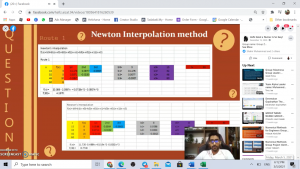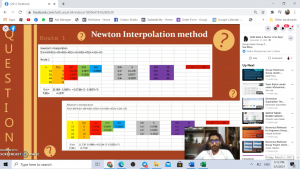Course overview
This course provides students with knowledge on basic algorithms in numerical methods, which allow them to solve practical engineering problems. The numerical methods covered include finding the roots of equation, linear algebra, regression and interpolation, differentiation and integration, ordinary differential equations, partial differential equations, and optimization. Mathematical software such as MATLAB® and Excel® are used for developing algorithms. Students are assigned a group project related to an engineering problem and synthesize a solution by applying numerical methods and using the software. Upon completion of the course students are able to analyse related engineering problems and apply appropriate numerical methods towards their solution.
Participants in piloting
This is a core, compulsory course for students enrolled in the Bachelor in Electrical Power Engineering, the Bachelor in Electrical Electronics Engineering, the Bachelor in Computer and Communication Engineering, and the Bachelor in Mechanical Engineering Programs at Universiti Tenaga Nasional. The course is part of the 2nd year curriculum. On average, a total of 200 – 300 students attend this course every semester. It bears 4 credit points that correspond to a 3-hour lecture and a 1-hour tutorial each week.
Use of ALIEN services and tools
Active learning was deployed throughout the semester. Each hour of learning time was into 5 – 6 segments. The first 10 minutes were allocated for students to prepare themselves for the topic to be covered by the course through warm-up exercises with open-ended questions. The questions were uploaded either on Facebook® or Telegram® groups usually 30 minutes before the class. In the 2nd segment students stand by for the lecture to start. They were exposed to a 2-minute song. The 3rd segment was a 15 – 20-minute lecture followed by a 3-minute quiz period during which students responded to the questions introduced at the beginning of the class. In the 4th segment students were exposed to a 2-minute song for releasing stress. The 5th segment was a 10 – 15-minute lecture divided into 2 sections; this division of work allowed students to maintain their interest and engagement and avoided congestion of knowledge. Finally, in the last segment students responded to a short quiz over a period of 10 minutes. The session was concluded with a discussion on the topic addressed.


The course further included a small group project during which active learning was deployed. Students were divided into groups of 5 – 6 individuals. They are assigned open-ended engineering problems that they solved using numerical methods and mathematical software. The learning objective for this activity was to encourage the application of theoretical knowledge and methods in real engineering applications. The activity further promoted group work and learning by teaching, where students researched a topic and presented it to the class.


